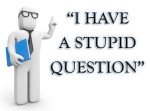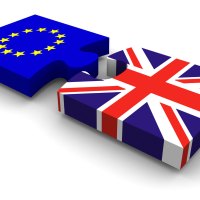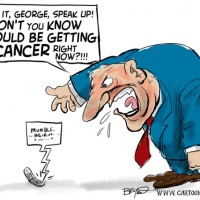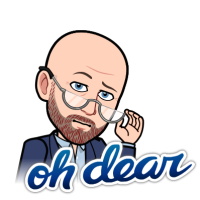A comparatively large number of posts on my blog deal with studies on adverse health effects of cell phone use. That’s not a coincidence; there is just a lot to talk about. Take for example a new study in the Journal of Exposure Science and Environmental Epidemiology that has been online since July 18 (it’s not actually available in print yet, so this article deals with the ‘cutting edge of science’). This study, entitled A Forecasting method to reduce estimation bias in self-reported cell phone data, can be accessed here (link) and describes a comparison of self-reported cell phone use with billing data to assess recall bias (which is). It then goes on to describe a statistical method to assess the correlation between the two with the underlying idea that recalled data can then be corrected to provide a better estimate of real (billed) data.
That is quite a good idea in principle.
I don’t think I want to spend too much time on the actual statistical plumbing, aside from the fact the authors call it a forecasting method; essentially just a better sounding acronym for normal statistical modelling when this is used to  predict one variable based on the value of another; which is then poured into a Bayesian mould to give it just a bit of extra flavour. All seems to be done quite thorough and their proposed method may (in principle) well be a step forward in forecasting methodology. I am however, not quite sure why a forecasting method would be very helpful. Regardless of whether we are doing an epidemiological case-control or a cohort study, forecasting seems pretty useless given that (in theory) we would just be able to collect that data. What we generally lack is the ability to retrospectively estimate exposure, or in this case cellphone use, for the years or decades prior to when the disease of interest is noted. Or, to stay with the theme, what we really need to improve on is the backcasting of exposure, since we cannot collect these data anymore, rather than forecasting. Well, there you go; maybe a forecasting method could be used to backcast as well, in which case this would be a “standard” prediction model.
predict one variable based on the value of another; which is then poured into a Bayesian mould to give it just a bit of extra flavour. All seems to be done quite thorough and their proposed method may (in principle) well be a step forward in forecasting methodology. I am however, not quite sure why a forecasting method would be very helpful. Regardless of whether we are doing an epidemiological case-control or a cohort study, forecasting seems pretty useless given that (in theory) we would just be able to collect that data. What we generally lack is the ability to retrospectively estimate exposure, or in this case cellphone use, for the years or decades prior to when the disease of interest is noted. Or, to stay with the theme, what we really need to improve on is the backcasting of exposure, since we cannot collect these data anymore, rather than forecasting. Well, there you go; maybe a forecasting method could be used to backcast as well, in which case this would be a “standard” prediction model.
But the more interesting thing of this paper, when it comes to exposure assessment is the choice of the exposure metric. Before going on I’d like to emphasize that the authors themselves acknowledged the following in their paper as well and gave it (minimal) attention in their Discussion section. So that’s said…
So to recap:
[1] Exposure misclassification in studies on health effects of cell phones is a problem (for example 1,2) and studies have been done (for example 1)
[2] A good method to evaluate this misclassification is to compare reported cell phone use with a gold standard (here billing information) in a sub-study.
[3] Use some kind of method to analyze correlations such that the measured exposure can be used to estimate “real” exposure.
But how to do this properly?
Right.
Now this is where the hypothesis comes in. Let me talk you through the thinking process:
[1] cell phone use has been linked (ok, ok, but not proven. Point taken) to a number of tumours of the brain and neck (link)
[2] These are very difficult studies to do, so we need to minimize misclassification of exposure since this will underestimate true risk (if it exist) and make it very difficult to get any statistically significant differences between different groups.
[3] Let’s do a study to evaluate the degree of misclassification in cell phone use.
[4] If cell phone use causes tumours of the brain and neck (link), then most likely this is caused when the cell phones are close to the head (for maximum exposure to the area of interest); otherwise, tumours would have shown up on other places as well (unless there is a link to problems with various things involved in making children from wearing cell phones in pockets of trousers (link), but that’s not the point here).
[5] Phones are used in close proximity to the head when making phone calls.
[6] So let’s do this validation study on when people are using their cell phones to text….
Uhm….what?
You have a group of people, you can ask them how often they use their cell phones to make calls and for how long. You can then compare that to billing data provided by those same people. Yet what the authors actually choose to do is to measure the one metric that has actually been advocated as a method to prevent exposure of the head and neck region to cellphone radiation (link) (well aside from not, or a lot less, calling of course).
So now at least we now know how good people are in estimating their exposure to something they are not doing when  they are exposed to something we are actually interested in. Unless of course, someone is planning a study on cell phone use and cancer of the..uhm…fingers?
they are exposed to something we are actually interested in. Unless of course, someone is planning a study on cell phone use and cancer of the..uhm…fingers?
Any takers….Anyone ???





 Sense about Science
Sense about Science
Jul's
August 4, 2012
My very dear dutch friend,
thanks for this nice point of view. That is true that, in this particular problem, there is an important need to correctly asses the exposure. To add one “confounding element to the text message partiicularity, the use of headsets (cordless or not) or of any other device allowing people to daily use their cell phone (e.g. while driving) will definitively challenge the impact of cellphone use on brain tumors despite a correctly assessed exposure, just like the time spent texting message or using internet or apps…
Concerning a study on finger tumors, you’ll definitively be exposed to other confounders such a dutch fingers-rolled cigarettes, plastic gloves users in labs, beer brewer….too much damages for world wide econonomy.
Take care
LikeLike
FdV
August 8, 2012
Thanks for the reply. Yes, use of headsets etc would further complicate the exposure assessment by introducing additional measurement error. But it all starts with measuring the correct exposure in the first place…
LikeLike
idebenone
December 16, 2012
Results of this study provide evidence that acute cell phone exposure affects brain metabolic activity. However, these results provide no information as to their relevance regarding potential carcinogenic effects (or lack of such effects) from chronic cell phone use.
LikeLike